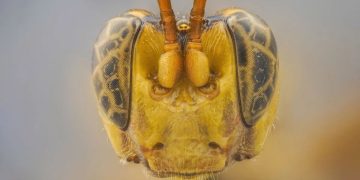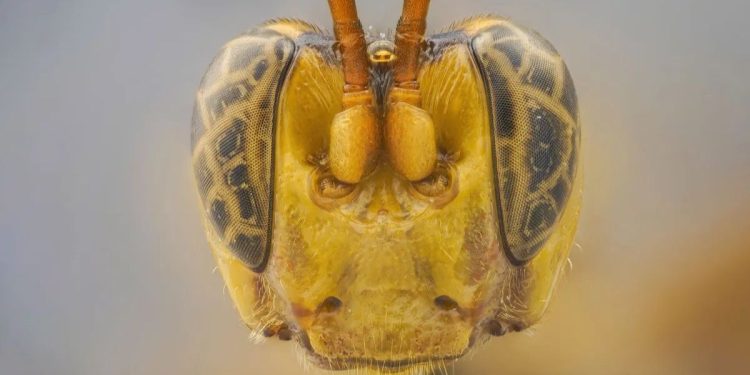CORRECTION, Oct. 16, 2023: The Amazon wasp Calistoga crassicaudata is about 0.4 inches long, according to Live Science. An earlier version of this article included a different figure.
The latest news from the Amazon is not pretty. In fact, it is downright ugly and not just a little bit scary.
Lurking in the rain forests of deepest, darkest Peru is a wasp that the New York Post, in its usual charming understated fashion, called a “‘vampire’ wasp.”
All of this ado is about a wasp with a name almost as long as the 0.7-inch-long bug: Capitojoppa amazonica, according to LiveScience.
Pic: Head of the newfound parasitoid wasp species, Capitojoppa amazonica. Scientists in the Amazon have discovered a giant-headed, bright-yellow wasp that stabs its hosts and sucks out its bloodlike fluid before eating its hosts from the inside out.https://t.co/vcBtLYyEd9 pic.twitter.com/zFibrUg2WX
— Gypsy’s Rainbow (@fair_josie) October 13, 2023
The bright yellow bug is getting attention because it has a massive head that looks like a Halloween mask that has spent time in a microwave.
Its eating habits are also noteworthy. As LiveScience said, it “stabs its hosts and sucks out its bloodlike fluid before eating its hosts from the inside out.”
For those brought up on B-grade TV movies of bizarre creatures eating humans, it should be noted that the new wasp prefers to nibble on caterpillars, beetles, and spiders.
The wasp was found in Peru’s National Reserve of Allpahuayo-Mishana in Peru by Brandon Claridge, a doctoral candidate in biology at Utah State University.
“Once the host is located and mounted, the female will frantically stroke it with her antennae,” Claridge told explained. “If acceptable, the female will deposit a single egg inside the host by piercing it with her ovipositor (a tube-like, egg-laying organ).”
When the eggs hatch, the new little critters chomp up the host from the inside out. That done, they rest inside a hard shell of the host’s corpse until hatching time, when the circle begins anew.
The wasp book of behavior also calls for the female to suck what’s called hemolymph, a bloodlike fluid found in bugs, from the wound it inflicted, Claridge said.
In some social settings, “females will even stab the host with the ovipositor and feed without laying an egg as it helps with gaining nutrients for egg maturation,” Claridge said in commenting about wasp behavior.
Parasitic ‘alien-like’ wasp discovered in the Amazon https://t.co/YGccBRcjLj pic.twitter.com/kX0BXt9jcw
— Daily Mail Online (@MailOnline) October 14, 2023
If you have not yet realized that bug spray ought to be at the top of your Amazon vacation list, consider Calistoga crassicaudata.
According to LiveScience, the 0.4-inch-long creature is part of a whole family of wasps that lay eggs in a host that is then killed by the baby wasps.
“We are finding new species all the time, but only a small fraction of them are so exciting,” Ilari Sääksjärvi, an entomologist at the University of Turku in Finland who helped discover the critter, said.
The wasps have giant stingers, but Sääksjärvi said the sting isn’t really all that bad because the stinger is too flimsy to pierce human skin.
“We keep finding new species, almost on a weekly basis,” Sääksjärvi said.
Science Daily reported in 2020 that a study found 15 varieties of parasitic wasps that feed on spiders.
This article appeared originally on The Western Journal.


























 Continue with Google
Continue with Google